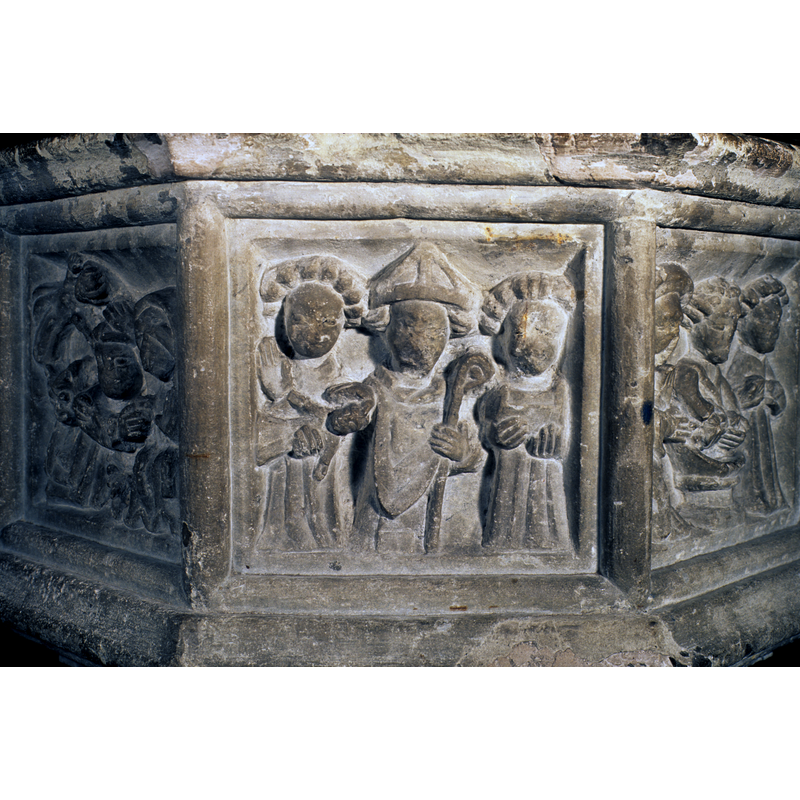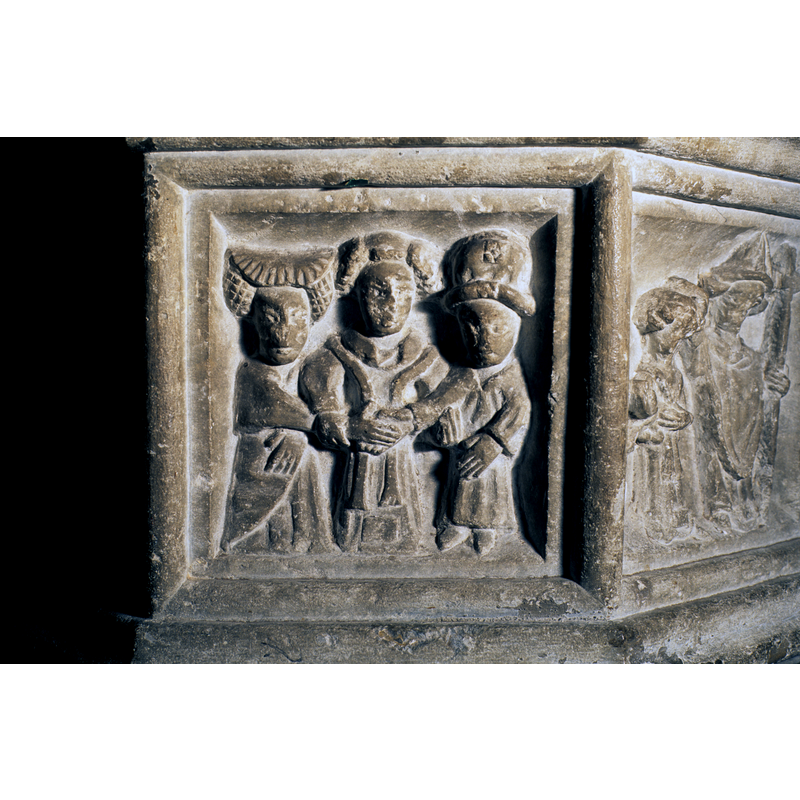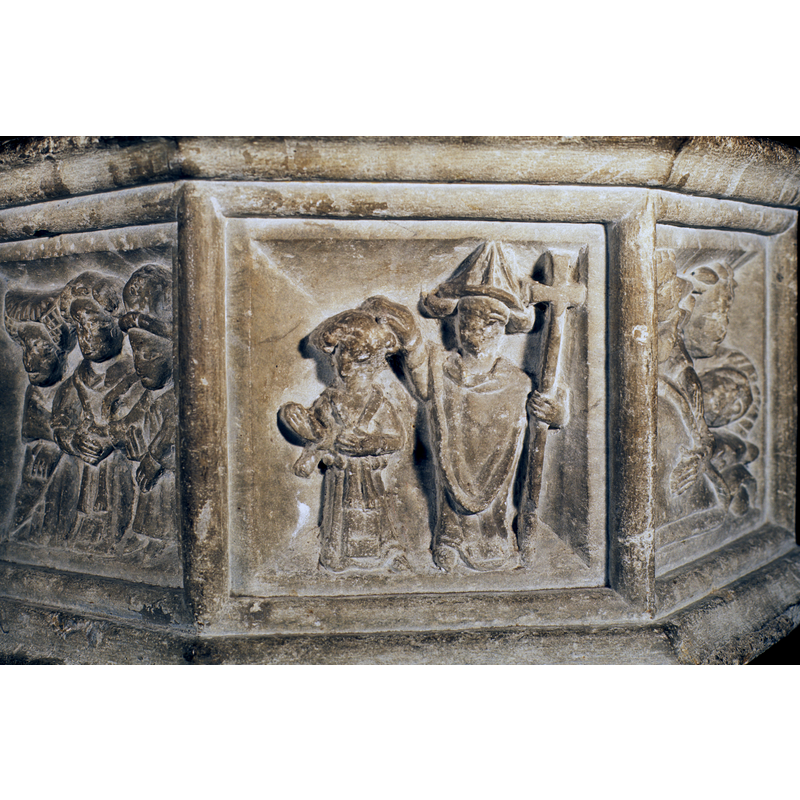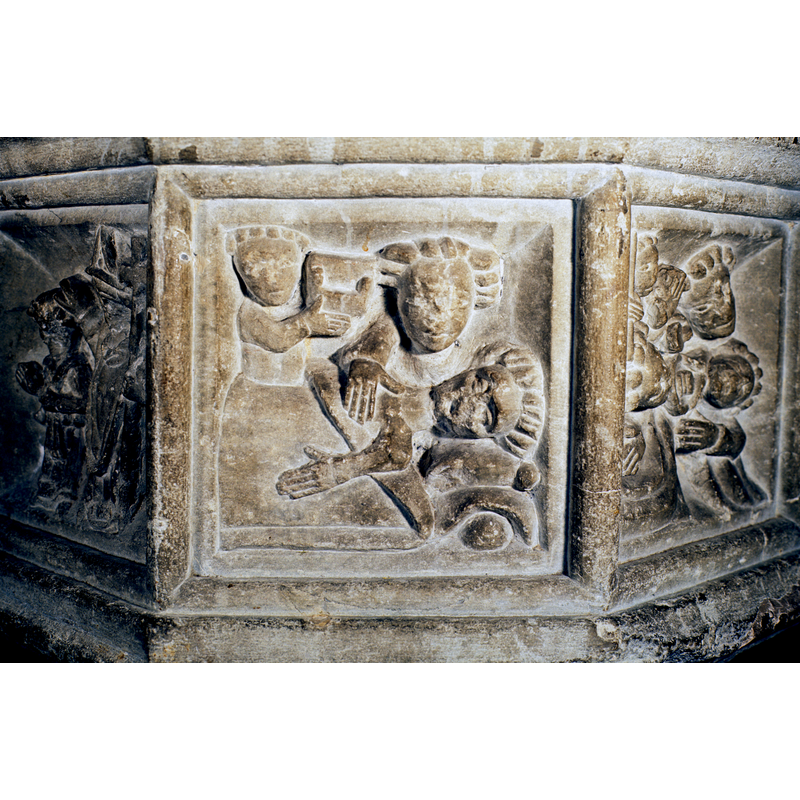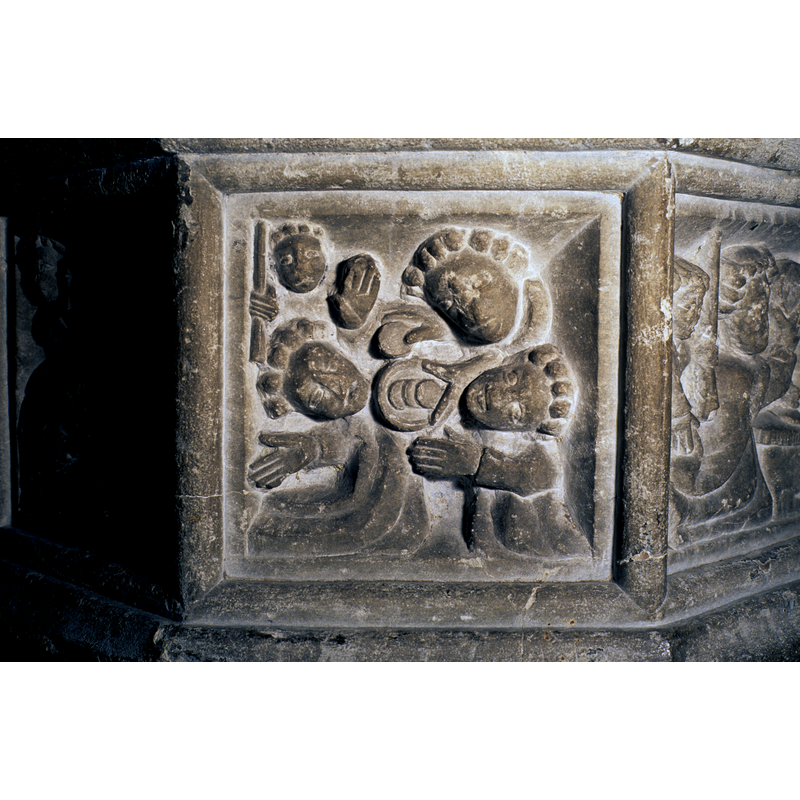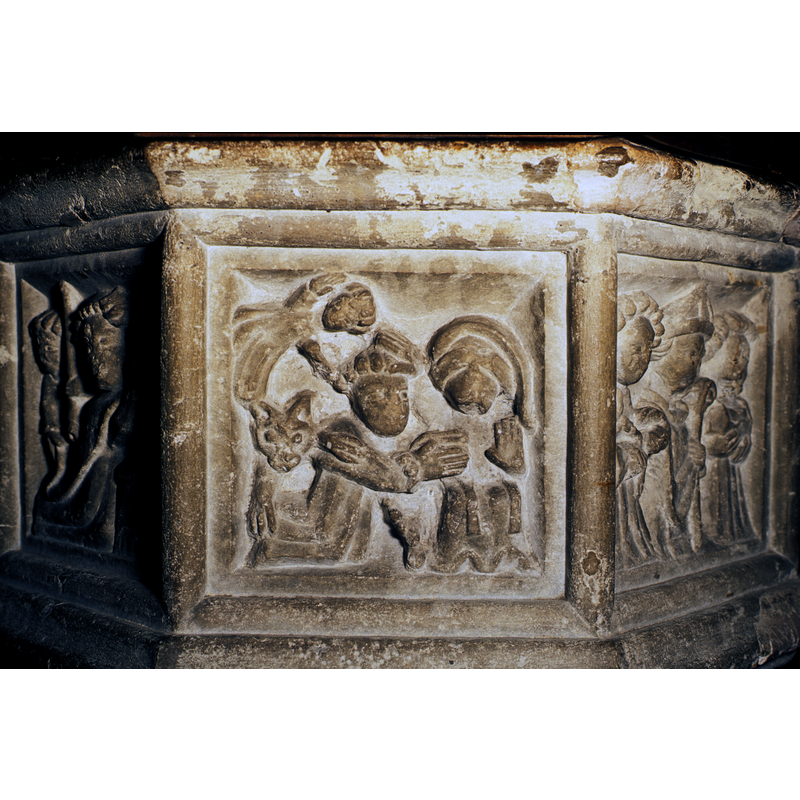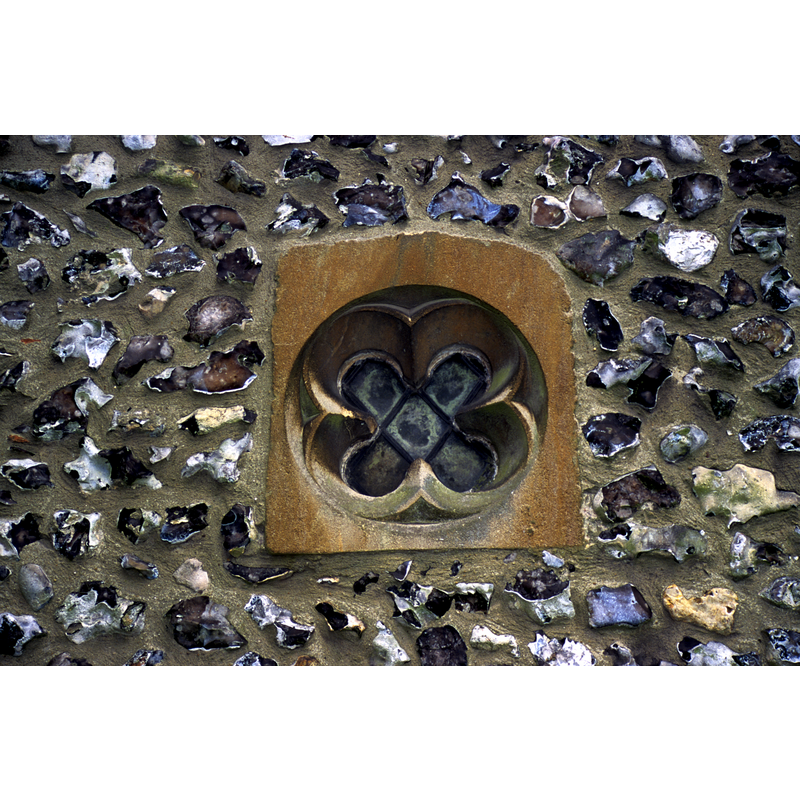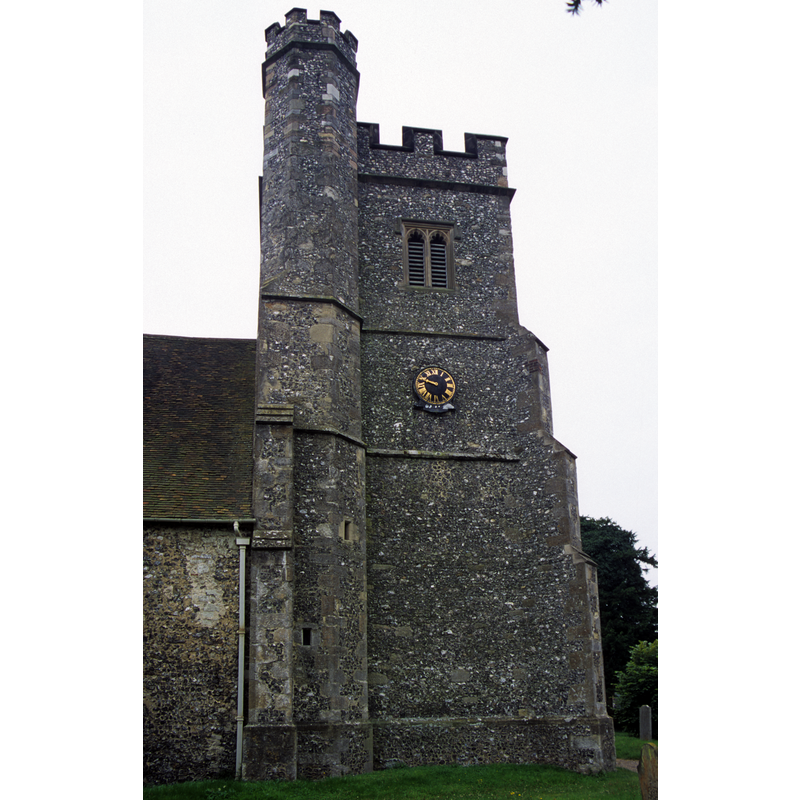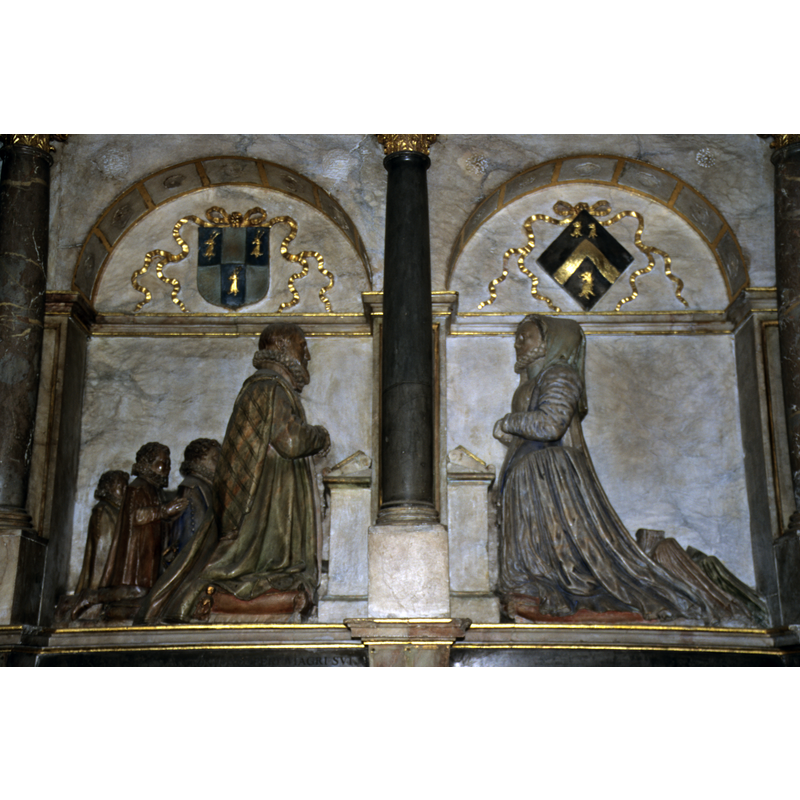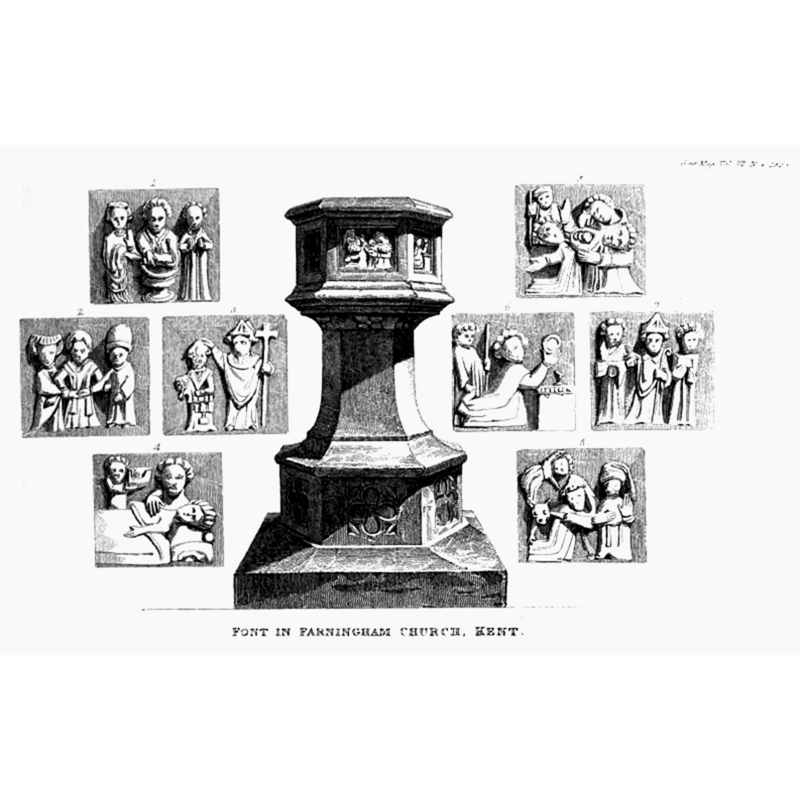Farningham / Farmingham / Ferlingeham / Ferningeham / Forningeham
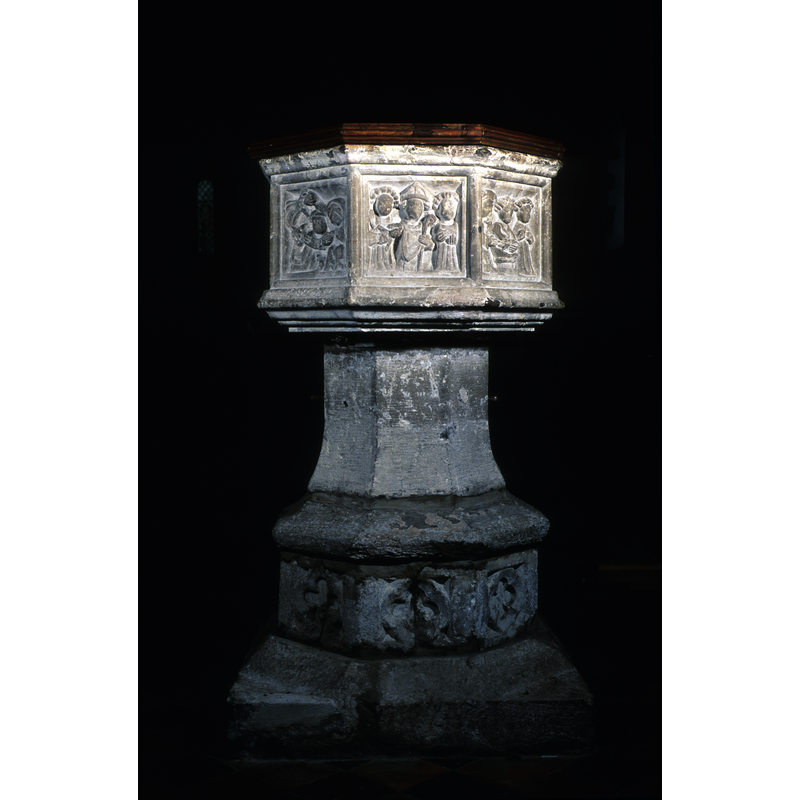
Image copyright © Baptisteria Sacra Index, 2023
Results: 18 records
B01: sacrament - confirmation
B02: sacrament - baptism
B03: sacrament - marriage
B04: sacrament - holy orders
B05: sacrament - extreme unction
B06: sacrament - eucharist
B07: sacrament - eucharist
B08: sacrament - penance
design element - motifs - moulding - graded
design element - motifs - quatrefoil - 8
view of church exterior - south view - detail
view of church exterior - southeast view
view of church exterior - west end
view of church interior - monument
view of church interior - monument - detail
view of font
INFORMATION
FontID: 01112FAR
Object Type: Baptismal Font1
Church/Chapel: Church of St. Peter and St. Paul
Church Patron Saints: St. Peter & St. Paul
Church Location: High Street, Farningham, Kent DA4 0DP
Country Name: England
Location: Kent, South East
Directions to Site: Located on the A20, SE of London
Ecclesiastic Region: Diocese of Rochester
Historical Region: Hundred of Axton [in Domesday]
Font Location in Church: Inside the church, in the W end of the centre nave, beneath the tower
Century and Period: 15th century [composite font?], Late Medieval [composite]
Workshop/Group/Artisan: Seven-Sacraments font
Cognate Fonts: Another Seven-Sacrament font outside East Anglia at Nettlecombe, Somerset
Font Notes:
Click to view
There are four entries for Farningham [variant spelling] in the Domesday survey [http://domesdaymap.co.uk/place/] [accessed 11 October 2016], none of which mentions cleric or church in it. A font here is noted in Gough (1792) as one of several fonts with scenes of the Seven Sacraments [NB: Gough spells name 'Farmingham']. Described in detail, with a drawing by Mr. Hollis, in The Gentleman's Magazine (issue of November 1836), and a reference to this font's appearance in Thorpe's Custumale Roffense. The article dates the font to the time of Henry VI [i.e., 1422-1461] based on some garments on the scenes, but warns that the stem is modern, and that the lower base "is in fact an older font reversed, and it was in all probability that which preceded the present, and by which it was superseded" [the article cites "the Clergyman at Farningham" as having communicated this latter information to Mr. Hollis. Reported in Lewis' Dictionary of 1848 and in Clarke's Gazetteer of 1852. Described in Hussey (1852): "The font is Perp[endicular], an octagon, with figures carved in the sides. The font is represented in Cust. Roff.) [i.e., Thorpe's Custumale Roffense]". Described in Glynne (1877): "The font is the most remarkable object about the church, and is a beautiful specimen of Curvilinear or Rectilinear work [i.e., roughly Decorated or Perpendicular]. The form is octagonal, and each face is richly sculptured with figures, in fine condition, possibly representing the Seven Sacraments. This font is engraved in the Custumale Roffense. Round the base of the shaft is a panelled band with quatrefoils. The whitewash has been carefully taken off." Both Bond (1908) and Cox & Harvey (1907) have a poor opinion of this font, the latter defining it as a rather crude imitation of the Seven-sacrament fonts of East Anglia. Noted in Cautley (1949). Newman (1976) writes that this font "has carvings, not good, of the Seven Sacraments", and that it is "one of only two Seven Sacraments fonts outside East Anglia [...] Nettlecombe, Somerset, is the other". Newman (ibid.) further notes that "In Marriage the bride wears a headdress typical of the third quarter of the C15." Described and studied in Nichols (1994). Octagonal mounted font with the Seven-sacraments carved on the basin sides, the added side depicting the Administration of the Holy Sacrament. Nichols (ibid.) points out the "preference for telescopic views" in its representations. On-site notes: the several volumes of the base, all octagonal and plain except for the lowest volume, which has quatrefoil ornamentation on its sides, and the square plinth do not seem to belong together, giving the font the aspect of a stone puzzle. The flat octagonal wooden lid is modern.
COORDINATES
Church Latitude & Longitude Decimal: 51.379896, 0.221529
Church Latitude & Longitude DMS: 51° 22′ 47.63″ N, 0° 13′ 17.5″ E
UTM: 31U 306649 5695736
MEDIUM AND MEASUREMENTS
Material: stone, limestone?
Font Shape: octagonal (mounted)
Basin Interior Shape: round
Basin Exterior Shape: octagonal
Drainage Notes: lead lining
Rim Thickness: 10-13 cm*
Diameter (inside rim): 50 cm*
Height of Basin Side: 32 cm*
Basin Total Height: 46 cm*
Height of Base: 67 cm*
Basin Upper Panel Dimensions: 28 x 32 cm* / 20 cm* [8 in. in the square]
Font Height (less Plinth): 113 cm*
Font Height (with Plinth): 132 cm* / 130 cm**
Trapezoidal Basin: 69 x 75 cm* (diagonals of the octagon) / 72.5 cm*
Notes on Measurements: * BSI on-ste / ** The Gentleman's Magazine (Nov. 1836: 480)
LID INFORMATION
Date: modern
Material: wood
Notes: flat octagonal lid; modern
REFERENCES
"The font at Farningham Church, Kent", November 1836, The Gentleman's Magazine: or, Trader's monthly intelligencer, 1836, pp. 480-481; p. 480-481 and plate
Bloxam, Matthew Holbeche, The Principles of Gothic ecclesiastical architecture, with an explanation of technical terms […], London: W. Kent, 1859
Bond, Francis, Fonts and Font Covers, London: Waterstone, 1985 c1908
Cautley, Henry Munro, Norfolk Churches, Ipswich: Norman Adlard & Co., 1949
Clarke, B., The British Gazetteer, poltical, commercial, ecclesiastical, and historical; showing [...], London: Published (for the proprietors) by H.G. Collins, 1852
Cox, John Charles, English Church Furniture, New York: E.P. Dutton & Co., 1907
Friar, Stephen, The Sutton Companion to Churches, Thrupp, Stroud (Gloucs.): Sutton Publishing, 2003
Glynne, Steven Richard, Sir, Notes on the churches of Kent, London: John Murray, 1877
Gough, Richard, "Description of the old font in the Church of East Meon, Hampshire, 1789: with some observations on fonts", X, Archaeologia, 1792, pp. 183-209; p. 192
Hussey, Arthur, Notes on the churches in the counties of Kent, Sussex, and Surrey mentioned in Domesday Book and those of more recent date [...], London: John Russell Smith, 1852
Lewis, Samuel, A Topographical Dictionary of England, Comprising the Several Counties, Cities, Boroughs, Corporate and Market Towns, Parishes, Chapelries, and Townships, and the Islands of Guernsy, Jersey, and Man, with Historical and Statistical Descriptions [...], London: S. Lewis, 1831
Newman, John, North East and East Kent, Harmondsworth: Penguin Books, 1976
Newman, John, West Kent and the Weald, Harmondsworth: Penguin Books, 1980
Nichols, Ann Eljenholm, Seeable Signs: The Iconography of the Seven Sacraments 1350-1544, Woodbridge: The Boydell Press, 1994
